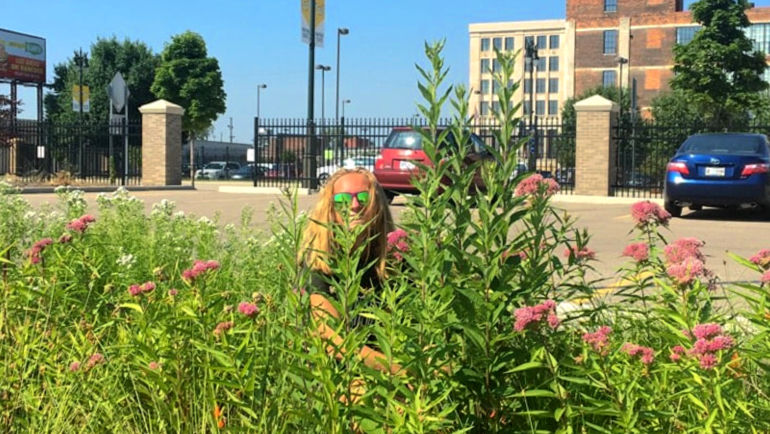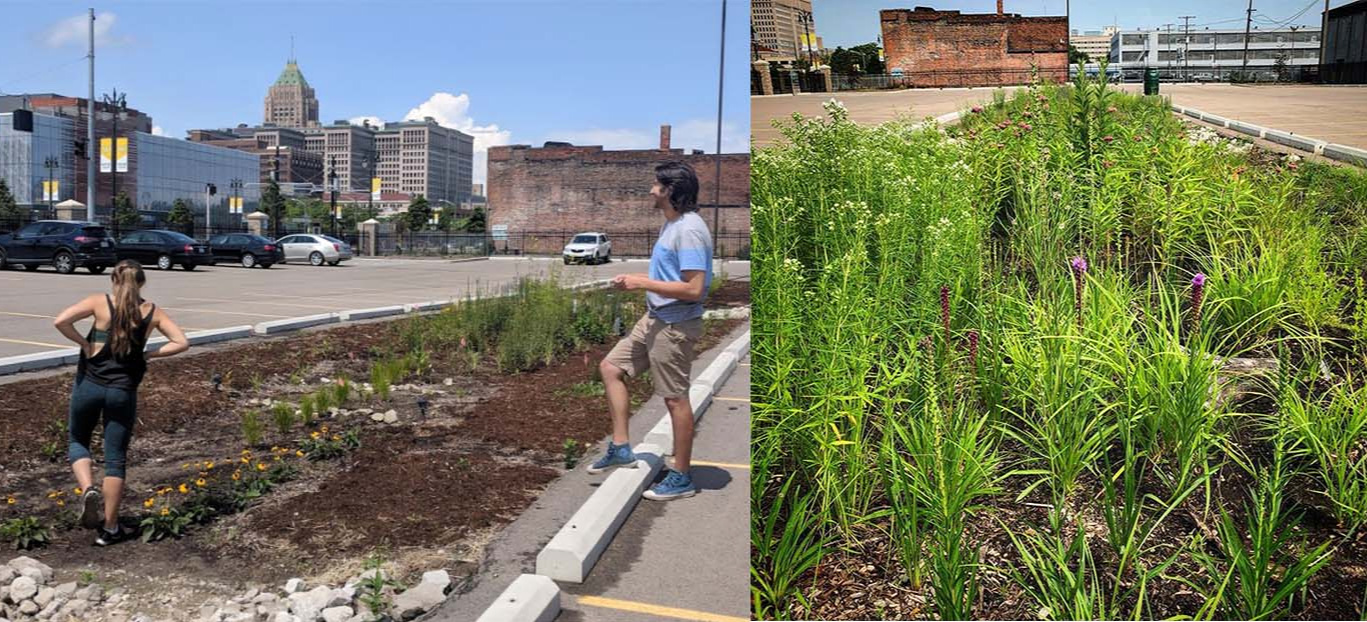
Each week for the past year, a dedicated group of Wayne State undergraduate students has visited Parking Lot 12 across from the Integrative Biosciences Center (IBio). In this expanse of asphalt and concrete sits an ecological wonder — a bioswale.
In rain, snow or shine, the students collect biological and hydrological data from this manmade landscape element, which is designed to take in rain runoff and filter out pollutants before the water can make its way to the drain system. In particular, the students monitor water flow into and out of the bioswale, soil moisture, stomatal conductance (how much carbon dioxide passes through) and vegetation greenness.

“Now, after a year of monitoring, the plants within the parking lot bioswale are well established and effectively making use of the water being redirected to them,” said Shirley Papuga, associate professor in the Department of Geology and the Environmental Science Program. “These data will be used to help managers understand how the bioswale functions and how well it is doing its job.”
Bioswales can be integrated into existing impervious surfaces, such as parking lots, where heavy rain can lead to excessive stormwater runoff. Using these bioswales, water is directed into a vegetated area where it can easy infiltrate the soil and be used by the vegetation.
In cities such as Detroit, with shrinking populations and aging and outdated infrastructures, sustainability experts are looking for innovative, cost-effective and eco-friendly solutions to issues like stormwater management. In these “shrinking cities,” Papuga said, vegetated areas — commonly referred to as “green infrastructure” — can provide beneficial services to an urban environment such as mitigating flooding, reducing the urban heat island effect and storing carbon.
To help address Detroit’s stormwater issues, Wayne State installed the bioswale in 2017 with many helping hands, including the Office of Sustainability and the Detroit Biodiversity Network (DBN). This green infrastructure gem was retrofitted into Parking Lot 12, with native plants introduced in spring 2018.
The success of this bioswale prompted Wayne State to install a second bioswale at IBio, under the leadership of DBN and Healthy Urban Waters (HUW). Referred to as iBioswale, this new university green infrastructure project was initiated earlier this year, and included a volunteer day on June 21 to prep the site for planting.
“Bioswales and other green infrastructure are becoming more and more common around Detroit, such as at the neighboring Michigan Science Center,” Papuga said. “As heavier rains are expected in Detroit, innovative stormwater solutions such as bioswales can provide other services such as carbon storage and visual aesthetics, and will be increasingly important. Our research team aims to understand how we can install and maintain this green infrastructure in a way that optimizes those benefits.”
